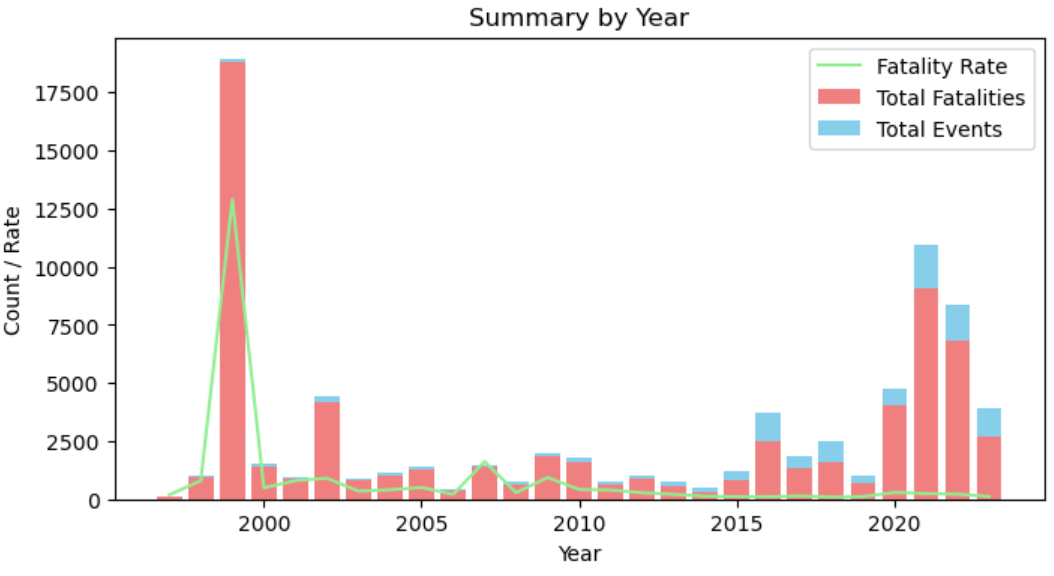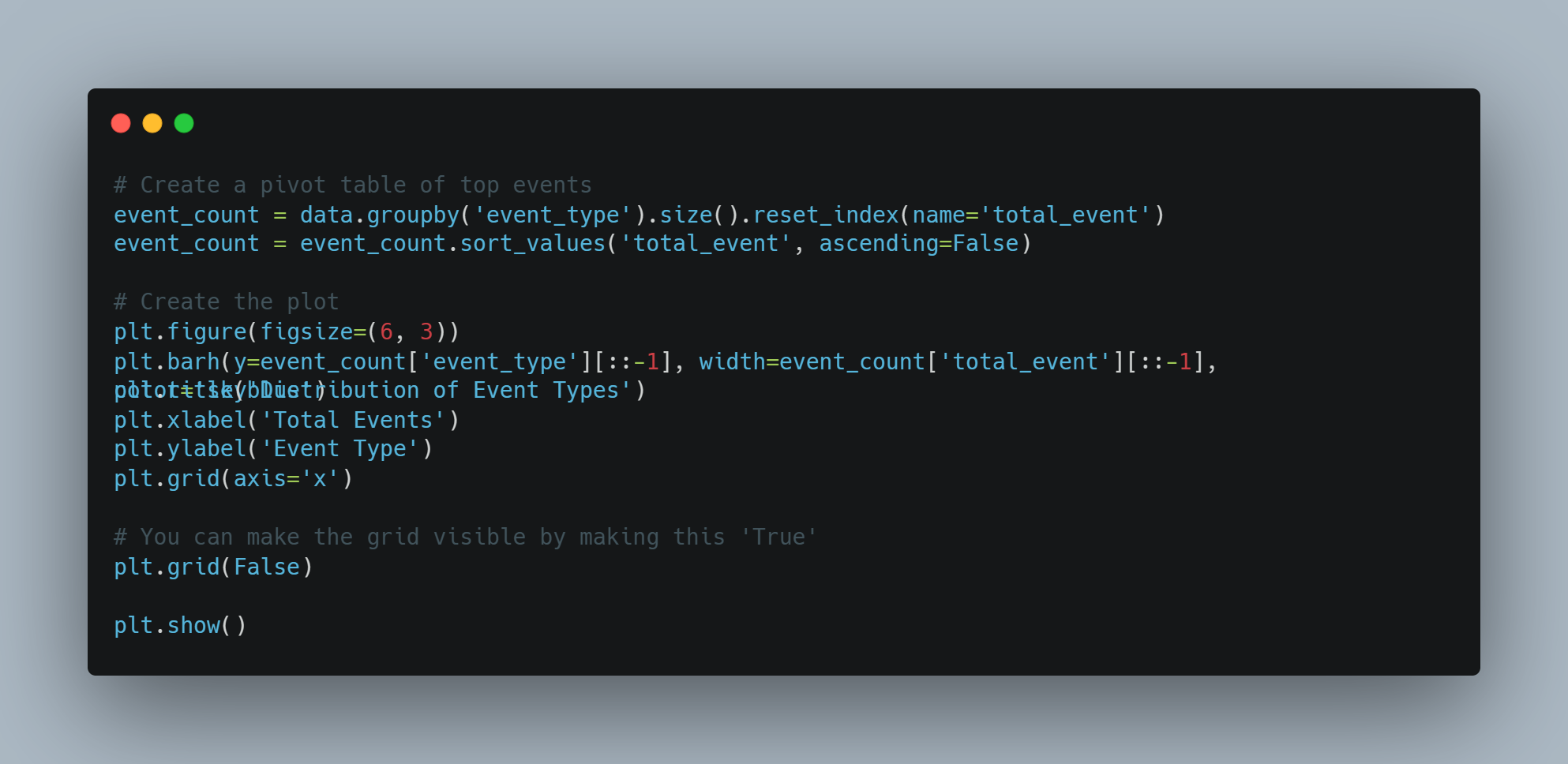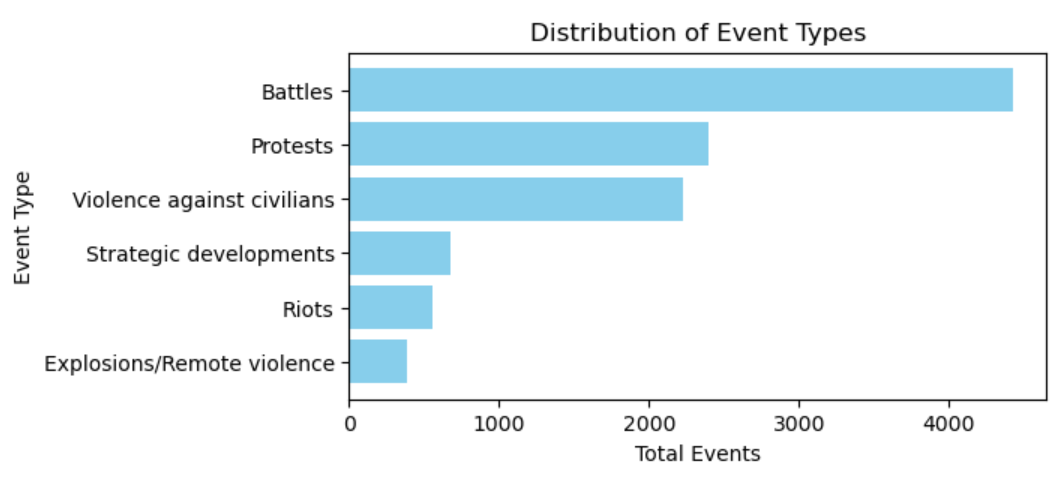Understanding Political Violence in Ethiopia

This project is dear to me. As an Ethiopian, having a first-hand interaction with the conflicts happening in the country, I have always wanted to understand its dynamics, objectively. But, due to the lack of data related to it, and also the one-sided reports that are out there, I wasn't able to.
So, you can't imagine how happy I was when I got the chance to work on it in collaboration with Selam Gebretsadik (my LinkedIn friend and co-owner of this project). After working on this exciting project for a while, we were able to create a notebook containing detailed analysis (link at the end of this post).
We first started the preliminary analysis using Excel, and, actually, Selam was the first one who found the outlier shooting at 1999 (you can see the image above). After a simple Google search, we found out that it was the casualties due to Eritrean–Ethiopian War, a bloody incidence which costed both countries significantly. 18839 dead in that year alone (1999, the war lasted for more than 2 years).
Tools used:
● Excel for initial exploration
● Python for further analysis and visualization

The above code generates the chart below.

Finally, we did the comprehensive analysis using python (Selam did it in R, but yeah). We got the results below.
Key Findings
- Conflict events in Ethiopia are not uniform and exhibit regional disparities. Regions like Oromia and Amhara consistently experience higher frequencies of conflict.
- Urban centers, including the capital city Addis Ababa, and specific towns like Lideta and Jigjiga, are focal points for political events.
- Examining trends over time reveals fluctuations, suggesting a dynamic socio-political landscape.
Top 3 recommendations
1. Implement a robust monitoring system, especially in high-conflict regions, to promptly identify and respond to emerging issues.
2.
Foster community engagement and dialogue to address underlying issues contributing to conflict, emphasizing local context.
3.
Implement targeted security measures in urban centers to mitigate the impact of conflict events, especially in capital regions.
*If you want to explore this project in its entirety, check out its GitHub repository here